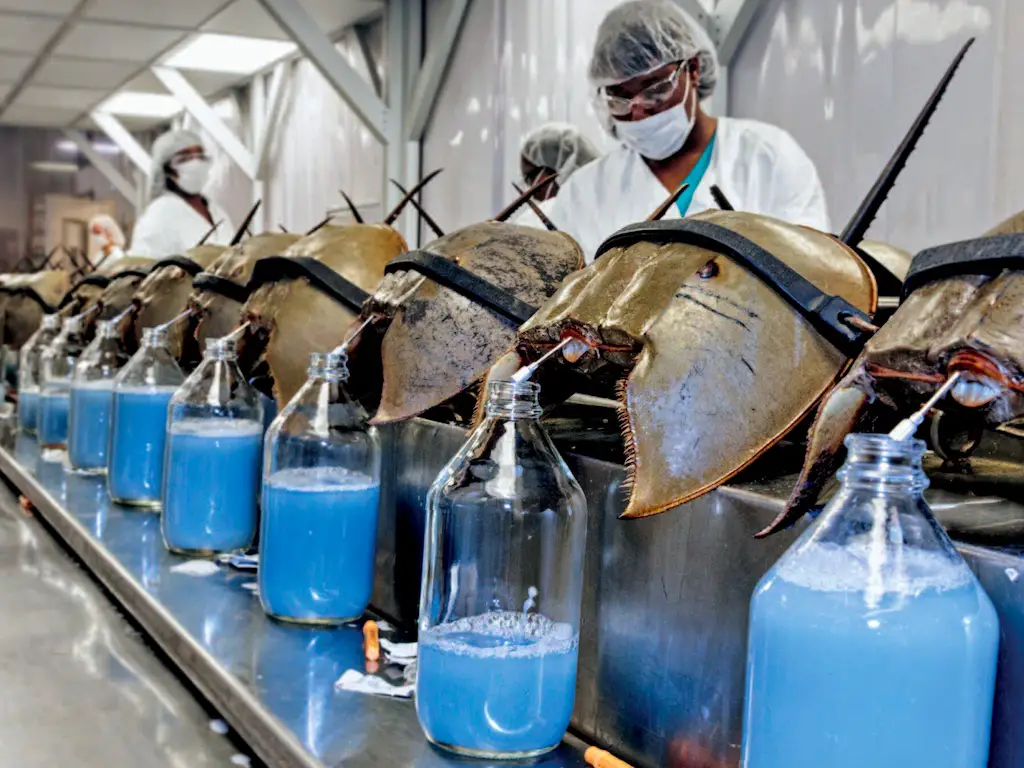Horseshoe Crabs Are Drained For Their Blue Blood Worth Thousands Of Dollars, This Practice Will End Soon
Tags: opinion

Humanity has done a lot of macabre and strange things when it comes to animals, in the time they have existed. These activities have driven numerous animals towards extinction. One such activity is harvesting the blue blood of horseshoe crabs. Fortunately, though, this activity is soon going to end.
But until it does end, several hundred thousand horseshoe crabs continue being fished from the waters of the eastern coast of the US. Their blood, which is immensely valuable, is then drained and extracted.
The Reasons Behind The Practice
The practice is almost surreal. The scientific name for the horseshoe crab native to the Atlantic Ocean is Limulus Polyphemus. We know its blood is worth quite a bit, but why is it so?
Well, for vertebrates, their blood contains hemoglobin which carries oxygen to the different parts of their body. Horseshoe crabs do not have hemoglobin in their blood. Instead, a chemical known as hemocyanin is present in their blood that does the work of the hemoglobin. This chemical is the reason why their blood gets its distinct blue hue. But that is not the real reason behind the steep price tag of horseshoe crab blood. The actual price point is the type of immune cells that are present in the creatures.
Read: Why Dolphins Are Slaughtered In The Faroe Islands And What You Can Do To Change That
Vertebrates’ blood has WBCs (or, white blood cells) which is the primary line of defense against foreign invasions. Horseshoe crabs and other invertebrates have amebocytes in place of WBCs in their blood. The moment an amebocyte and a pathogen touch each other, a chemical is released by the amebocyte. This chemical makes the blood in the area clot. Researchers think that dangerous pathogens are isolated in this manner.
The Importance Of Amebocytes
Particularly, the horseshoe crab’s blood’s amebocytes turn solid when it comes into contact with an endotoxin. An endotoxin is a bacterial product that is sometimes deadly and very pervasive. This chemical is also the trigger for the immune system to begin functioning. At times, it can cause septic shock, fever, or organ failure.
One of the most serious problems that human medicines face is the presence of this bacterial toxin in needles, drugs, or whatever that may touch human blood. This is the primary fear behind “infection”. In the past, researchers would administer samples of the substance being tested, to rabbits and then watch over them for hours and see the reaction of their immune system. But everything changed after horseshoe blood’s amebocytes were discovered. Now, simply adding amebocytes to a sample is enough to test for the presence of endotoxins.
Read: Artificial Spinal Cord Gel Allows Paralyzed Mice To Walk Again
Horseshoe blood is used to create Limulus Amebocyte Lysate (LAL), and it took little time to be as valuable as gold. Because of endotoxins’ ubiquity and the essential need to check if they are present, 1 quart of horseshoe blood can be as costly as $15,000. About 600,000 horseshoe crabs are caught each year. About 30% of the blood gets drained and they are sent back to their habitats. However, it is estimated that about 30% of the creatures die in the process.
The Substitute That Is Saving The Horseshoe Crabs
Researchers have managed to isolate the LAL factor that causes the clotting, known as C. Then insects belonging to the Arthropoda phylum were genetically modified to produce this factor. Now, the recombinant factor C can be freely produced and sold, as one of horseshoe blood’s viable substitutes.
Surprisingly, recombinant factor C (or rFC) has been available for purchase since 2003. By 2013, 2 companies were approved to produce it: Hyglos GmbH and Lonza Group. It has already received the approval of some regulatory bodies in Europe. Experts believe that it is only a matter of time before the FDA also gives the approval required to increase rFC’s production. As such, horseshoe crabs may soon be saved from this ordeal.
SUPPORT US ON PATREON AND GET ACCESS TO OTHER EXCLUSIVE CONTENT, CLICK HERE TO LEARN MORE
FOLLOW MIKE ON INSTAGRAM FOR MORE: @MIKESYGULA
Image credit: Business Insider

Leave Comment: